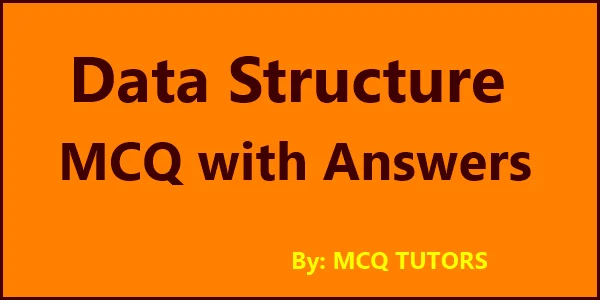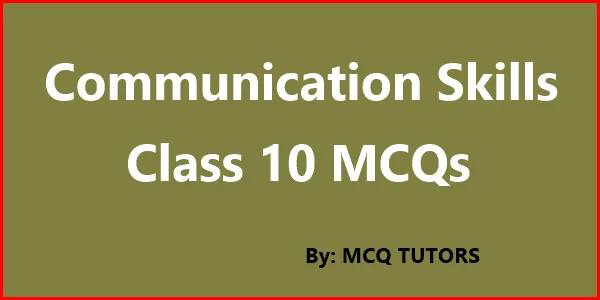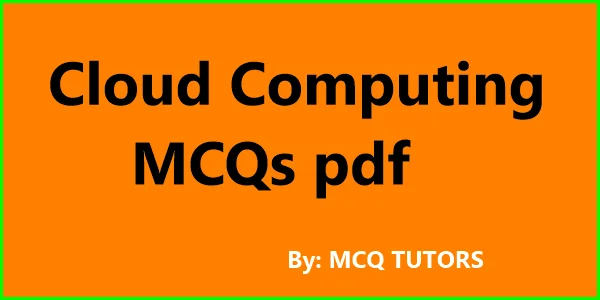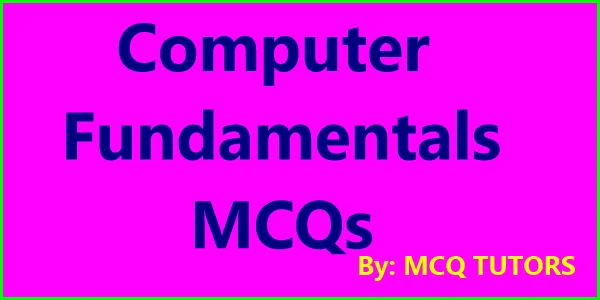Database Management System Class 10 MCQ with Answer. Basic DBMS Multiple choice questions with answers pdf.
Here, you will find accurate Database Management System Class 10 MCQs, along with their solutions. Additionally, this article provides an overview of the various topics related to Database Management System in Class 10. Preparing for an examination has never been easier!
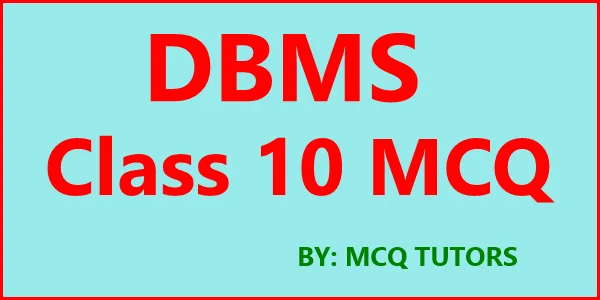
Database Management System Class 10 MCQ
1. Administrative the DBMS and related software’s is the responsibility of ___.
a. DBD
b. DBA
c. End users
d. Tool developers
Ans. B
2. Tools are the third party ___ which are not available with the DBMS.
a. Optional software packages
b. Compulsory software packages
c. Designing software packages
d. None of the above
Ans. A
3. In three-scheme architecture which level is independent of both software and hardware.
a. Internal level
b. Conceptual level
c. External level
d. View level
Ans. B
4. ___ is the property that describes an entity.
a. DDL
b. DML
c. Model
d. Attributes
Ans. D
5. ___ processes schema definitions specified in the DDL and stores descriptions of the schema in the DBMS catalog.
a. DDL computer
b. DML computer
c. Run time database processor
d. Query processor
Ans. A
6. A relation database is ___, not design-driven:
a. Relation has driven
b. Query driven
c. Data-driven
d. None of the above
Ans. C
7. Which is the most basic unit of data on the disk?
a. a bit of information
b. a byte of information
c. both a & b
d. None of the above
Ans. A
8. Which techniques permit continuous reading or writing of data on consecutive disk blocks, which eliminates the seek time and rotational delay for all but the first block transfer.
a. Buffering
b. Disk fragmentation
c. Spooling
d. Double buffering Ans. D
9. Hashing for disk files is ___.
a. Chaining
b. Dynamic hashing
c. External hashing
d. None of the above
Ans. C
10. A ___ is an index specified by the ordering key field.
a. First field
b. Second field
c. Primary index
d. None of the above
Ans. C
11. B tree eliminates the ___ storage of search key values.
a. Redundant
b. Unique
c. Disputed
d. None of the above
Ans. A
12. The number of tuples is relations are called?
a. Degree of relation
b. Physical database design
c. The cardinality of the relation
d. Functionality of relation
Ans. C
13. Which kind of schema describes the data type, relationship, and constraints.
a. Conceptual schema
b. Logical schema
c. Internal schema
d. External schema
Ans. A
14. ___ is a “thing” in the real world with an independent existence that is distinguishable from al other objects.
a. Flow
b. Entity
c. Attribute
d. Relation
Ans. B
15. What do we call a set of entities of the same type that share the same properties or attributes.
a. Entity sets
b. Composite entities
c. Multivalue entities
d. Derived entity
Ans. A
16. Each attribute is associated with a set of values called ___.
a. Entities
b. Relations
c. Degree of attribute
d. Domain
Ans. D
17. Attributes which are not divided into subparts are called?
a. Single attributed
b. Atomic attributes
c. Related attributed
d. None of the above
Ans. B
18. Some entity types may not have any key attribute of their own, they are called ___.
a. Existing entity
b. Strong entity
c. Weak entity
d. Relational entity
Ans. B
19. A relation is defined as a set of ___.
a. Entities
b. Tuples
c. Columns
d. Attributes
Ans. B
20. Which mathematical symbol is used to denote the select operator.
a. δ
b. ∑
c. λ
d. σ
Ans. D
21. ___ is used to select only a few columns from a table.
a. Projection operation
b. Intersection operation
c. Both a & b
d. Cartesian product
Ans. A
22. Which symbol is used to denote the rename operator.
a. ρ
b. σ
c. δ
d. λ
Ans. D
23. ___ of relational algebra and relational calculus are equivalent.
a. Tuple
b. Relational power
c. Expressive power
d. None of the above
Ans.
24. Which clause filters the rows returned by the group by clause?
a. Having clause
b. Order clause
c. Like clause
d. Order by clause
Ans. A
25. The query within a ___ clause is called the inner query or subquery.
a. Order by clause
b. WHERE
c. Having clause
d. Order clause
Ans. B
26. The ___ clause returns true in a WHERE clause, if the subquery that follows returns at least one row.
a. Order by clause
b. Exists
c. Having
d. Order clause
Ans. B
27. What does BCNF stands for –
a. Boyce codd normalization form
b. Boyce cod normal functions
c. Boyce codd normal form
d. None of the above
Ans. C
28. A ___ is an atomic unit comprised of one or more SQL statements. It begins with the first executable statement and ends when it is committed or rolled back.
a. Transaction
b. Entity
c. Attribute
d. None of the above
Ans. A
29. A problem occurs when one transaction updates a database item and then the transaction fails for some reason. The updated item is accessed by another transaction before it is changed back to its original value.
a. The lost update problem
b. Incorrect summary problem
c. Data consistency problem
d. Dirty load problem
Ans. D
30. ___ is needed in case the system fails after a transaction commits but before all the changes are recorded in the database.
a. REDO
b. Commit
c. Undo
d. None of the above
Ans. A
31. In ___ method updates are applied to the database without waiting to reach the commit point.
a. Deferred update
b. Immediate update
c. Atomicity
d. None of the above
Ans. B
32. Data can be accessed by users at other remote sites through the ___ software.
a. Remote database management system
b. Relational database management system
c. Distributed database management system
d. None of the above
Ans. C
33. ___ model allows clients to make requests that are routed to the appropriate server in the form of transactions.
a. One tier
b. Client-server
c. Database server
d. None of the above
Ans. B
34. Techniques that are used to break up the database into logical units are called?
a. Data allocation
b. Data fragmentation
c. Data distribution
d. None of the above
Ans. B
35. The replication of the whole database at every site in the distributed system is called ___.
a. Fully replicated data
b. Complete replicated data
c. Any of a & b
d. None of the above
Ans. A
36. A ___ can hide data that a user does not need to see.
a. Report
b. Password
c. View
d. None of the above
Ans. C
37. A user has an ___ if and only if there is a path from the root of the authorization graph down to the mode representing the user.
a. Authorization
b. Authentication
c. Encryption
d. Both a & c
Ans. A
38. It is not possible for encrypted data to be read unless the reader knows how to ___ it!
a. Decrypt
b. Substitute
c. Transpose
d. Cryptograph
Ans. A
39. What is an encryption technique developed by the US National Bureau of Standards?
a. Data coding techniques
b. Data encrypting techniques
c. Data encryption standard
d. Information hiding
Ans. C
40. ___ is an alternative scheme that avoids some of the problems that we face with the DES.
a. Public key encryption
b. Data encrypting techniques
c. Data encryption standard
d. Information hiding
Ans. A
41. The three-schema architecture has three levels:
a. Internal level, conceptual level, external level
b. Physical level, conceptual level, structure level
c. Inner level, middle level, outer level
d. Physical level, operational level, structure level
Ans. A
42. 2 kinds of data independence are –
a. Physical, conceptual
b. Physical, logical
c. Conceptual, structural
d. None of the above
Ans.
43. Query processor is used to converting outline user’s query into an efficient series of ___ and send it to the ___ for execution.
a. Calculations, DBA
b. Operations, data manager
c. Calculations, server
d. Operation, client
Ans. B
44. DML commands from an application program written in a host programming language are extracted from a ___. These commands are sent to the DML compiler for competition into ___ for database access.
a. Precompiler, object code
b. Compiler, logic code
c. Interpreter, object code
d. Computer, database
Ans. A
45. To transfer a disk block, given its address, the disk drive must first mechanically position the read/write head on the correct track. The time required to do this is called the ___. Some additional time is
a. Load time, data transfer time
b. Run time, data transfer time
c. Seek time, block transfer time
d. Reach time, block transfer time
Ans. C
46. The 2 ways in which an entity can participate in a relationship are –
a. Total, partial
b. Full, half
c. Either a & b
d. None of the above
Ans. A
47. Some entity types may not have any key attribute of their own, they are called ___ types. An entity set that has a primary key is termed as ___ type.
a. Null entity, a strong entity
b. Weak entity, a strong entity
c. Weak entity, a strong entity
d. None of the above
Ans. B
48. A referential integrity constraint requires that the value in the ___ matches a value in the ___.
a. Primary key, a parent key
b. Parent key, primary key
c. Reference key, foreign key
d. Foreign key, a parent key
Ans. D
49. A join condition is of the form.
a. <Condition> && <Condition> && <Condition>
b. <Condition> & <Condition> & <Condition>
c. <Condition> and <Condition> and <Condition>
d. <Condition> or <Condition> or <Condition>
Ans. C
50. Misuse of the database can be categorized as being either ___ or ___.
a. Integrity, intentional
b. Confidentiality, integrity
c. Accidental, intentional
d. None of the above
Ans. C
Data Mining Objective Questions and Answers
Conclusion Points
Database Management System is an important topic that Class 10 students should have a solid understanding of. The MCQs in this post are designed to help students test their knowledge and develop a better understanding of the subject.
Thanks for visiting our website, if you like the post on Database Management System Class 10 Download Pdf format of MCQ with Answer, please share it on social media.
